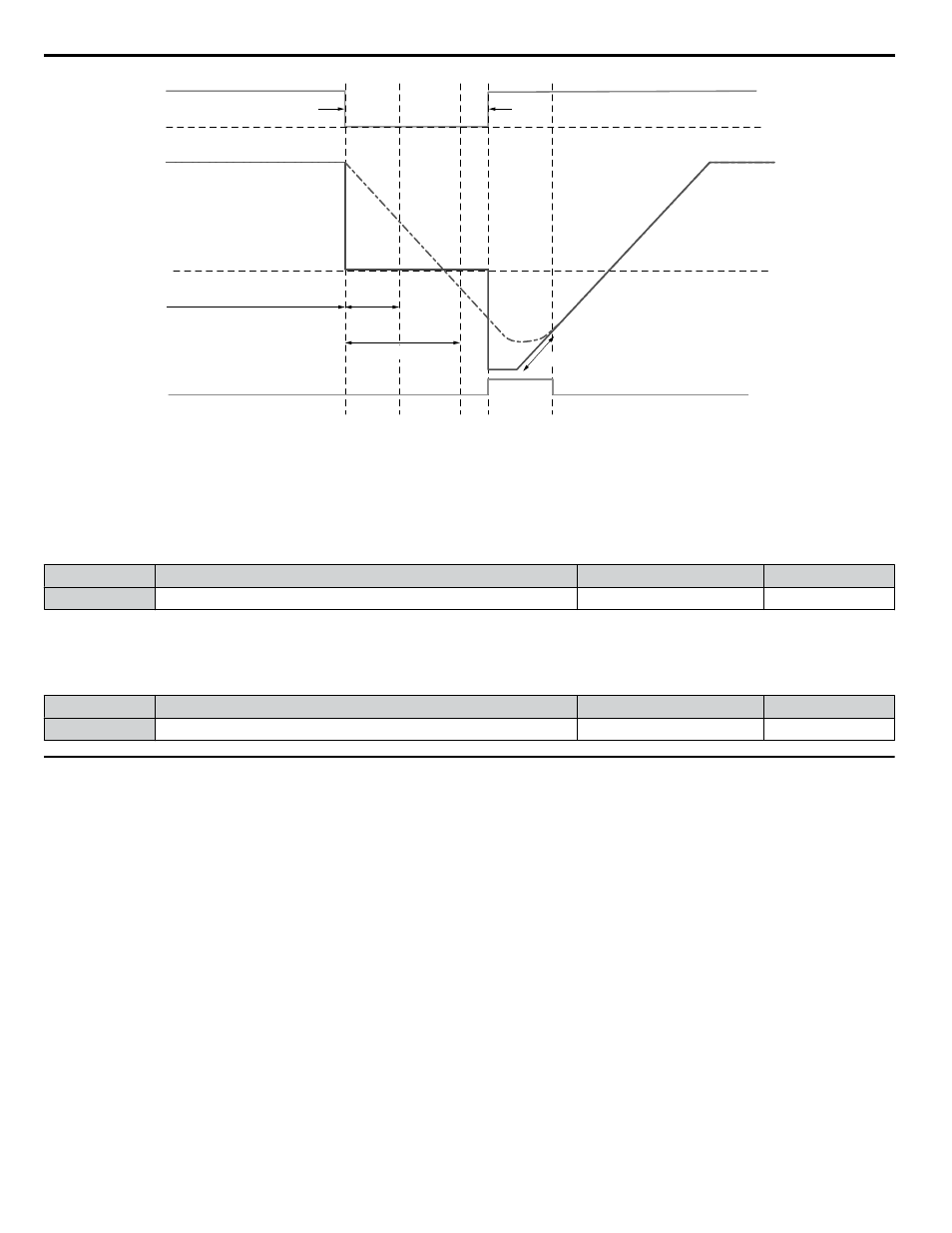B5: pid control – Yaskawa Z1000U HVAC Matrix Bypass User Manual
Page 142

Motor speed
Output frequency
Power supply voltage
0
Normal operation
Search in progress
b3-50
b3-51
Forward operation
t
Momentary power loss time t
b3-53
Figure 5.9 Speed Search in Direction Opposite to Direction Command (b3-50 ≤ t < ∞)
n
b3-52: Backspin Search Deceleration Time 1
Sets the search frequency deceleration rate when searching from the direction command when momentary power loss time t
is shorter than the time set in b3-50.
Set the value lower than the motor deceleration rate during coasting.
No.
Name
Setting Range
Default
b3-52
Backspin Search Deceleration Time 1
0.1 to 10.0 s
2.0 s
n
b3-53: Backspin Search Deceleration Time 2
Sets the search frequency deceleration rate for a Speed Search from the opposite direction of the direction command when
momentary power loss time t is equal to or longer than the time set in b3-51.
No.
Name
Setting Range
Default
b3-53
Backspin Search Deceleration Time 2
0.1 to 10.0 s
2.0 s
u
b5: PID Control
The drive has a built-in Proportional + Integral + Derivative (PID) controller that uses the difference between the target value
and the feedback value to adjust the drive output frequency to minimize deviation and provide accurate closed loop control
of system variables such as pressure or temperature.
n
P Control
The output of P control is the product of the deviation and the P gain so that it follows the deviation directly and linearly. With
P control, only an offset between the target and feedback remains.
n
I Control
The output of I control is the integral of the deviation. It minimizes the offset between target and feedback value that typically
remains when pure P control is used. The integral time (I time) constant determines how fast the offset is eliminated.
n
D Control
D control predicts the deviation signal by multiplying its derivative (slope of the deviation) with a time constant, then adds
this value to the PID input. This way the D portion of a PID controller provides a braking action to the controller response and
can reduce the tendency to oscillate and overshoot.
D control tends to amplify noise on the deviation signal, which can result in control instability. Only use D control when
absolutely necessary.
5.2 b: Application
142
YASKAWA SIEP YAIZ1D 01A Z1000U HVAC MATRIX Drive Bypass Technical Manual